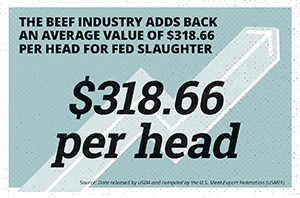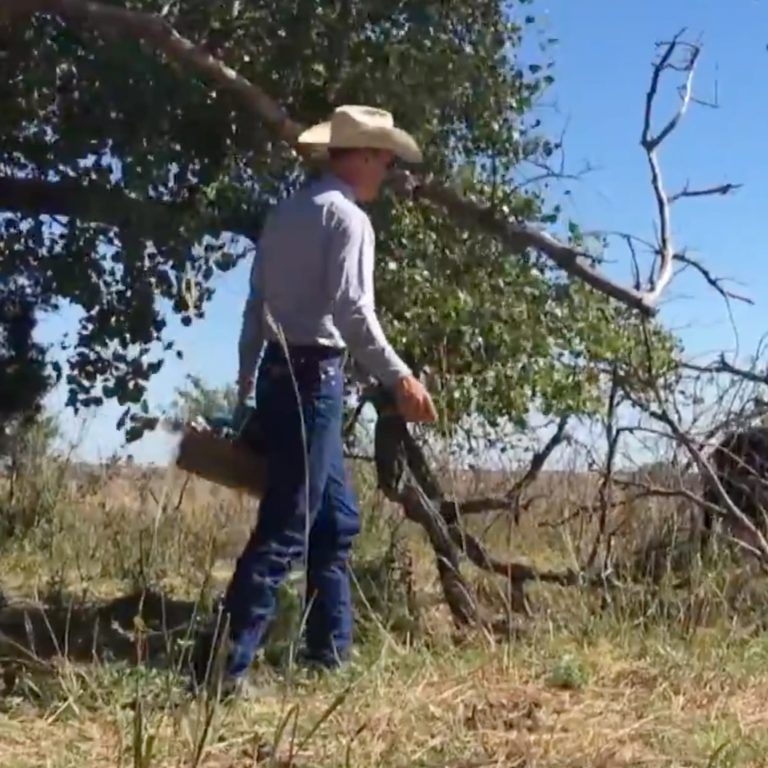
The Beef Export Picture
 In fiscal year 2018, the Beef Checkoff program invested checkoff funds of $7.36 million in foreign marketing and education because exports represent a significant growth opportunity for U.S. beef producers. By selling U.S. beef in more than 80 countries worldwide, the beef industry adds back an average value of $318.66 per head for fed slaughter to U.S. beef producers, according to data released by United States Department of Agriculture (USDA) and compiled by the U.S. Meat Export Federation (USMEF). USDA research also showed, from January through August 2018, beef export value climbed 18 percent from a year ago to $5.51 billion.
In fiscal year 2018, the Beef Checkoff program invested checkoff funds of $7.36 million in foreign marketing and education because exports represent a significant growth opportunity for U.S. beef producers. By selling U.S. beef in more than 80 countries worldwide, the beef industry adds back an average value of $318.66 per head for fed slaughter to U.S. beef producers, according to data released by United States Department of Agriculture (USDA) and compiled by the U.S. Meat Export Federation (USMEF). USDA research also showed, from January through August 2018, beef export value climbed 18 percent from a year ago to $5.51 billion.
China provides an interesting example of how beef exports benefit the U.S. beef industry. China was one of only a few international markets that never reopened to U.S. beef following the 2003 bovine spongiform encephalopathy (BSE) case — but that changed in June 2017, as the U.S. and China announced a long-awaited market reopening.
U.S. beef exports to South Korea also received a major boost in fiscal year 2017 when Costco officially converted the imported chilled beef selection at all 15 of its Korean locations from Australian product to 100 percent U.S. beef. The move followed multi-year, checkoff-funded efforts to both restore consumer confidence in U.S. beef and persuade Costco executives that U.S. beef sales would match or exceed those of Australian beef. Costco’s move represents about 33.1 million pounds of incremental new beef business in 2017 alone, with additional growth opportunities.
“The value of exports exceeds the value of imports for a similar volume of product because exports command a higher per-pound price,” said Laurie Bryant, Cattlemen’s Beef Board member. “In other words, importing beef creates a net increase for the U.S. beef industry by allowing us to export more high-value beef.”
The export/import landscape is a nuanced balancing act. Importing beef creates a net increase for the U.S. beef industry by allowing us to export more high-value beef.
The Beef Checkoff program was established as part of the 1985 Farm Bill. The checkoff assesses $1 per head on the sale of live domestic and imported cattle, in addition to a comparable assessment on imported beef and beef products. States may retain up to 50 cents on the dollar and forward the other 50 cents per head to the Cattlemen’s Beef Promotion and Research Board, which administers the national checkoff program, subject to USDA approval.























































